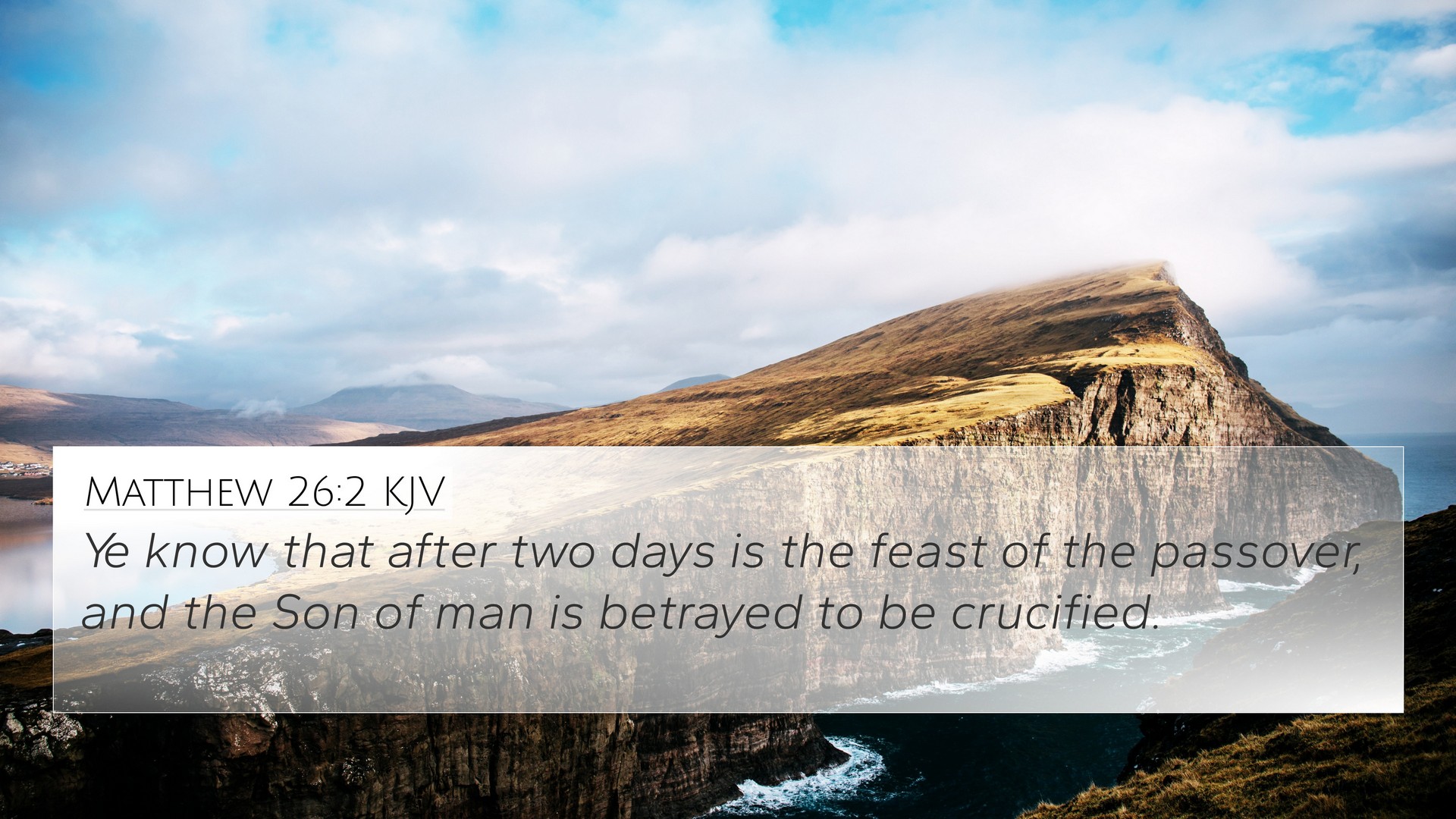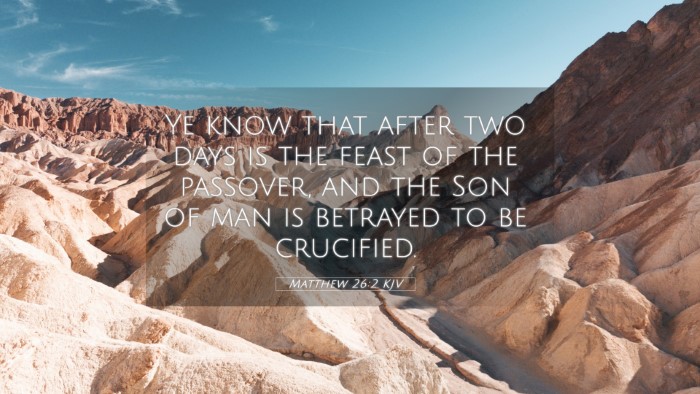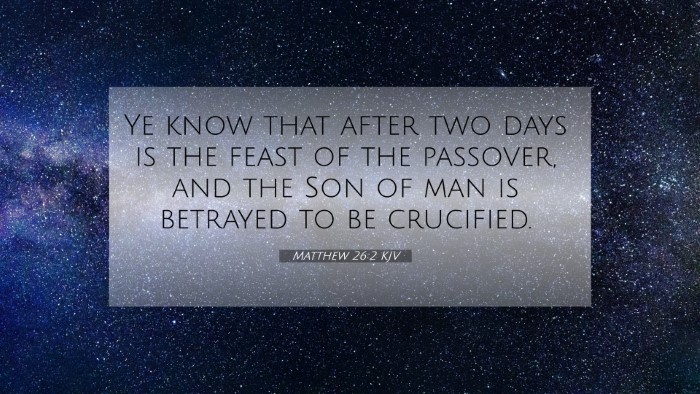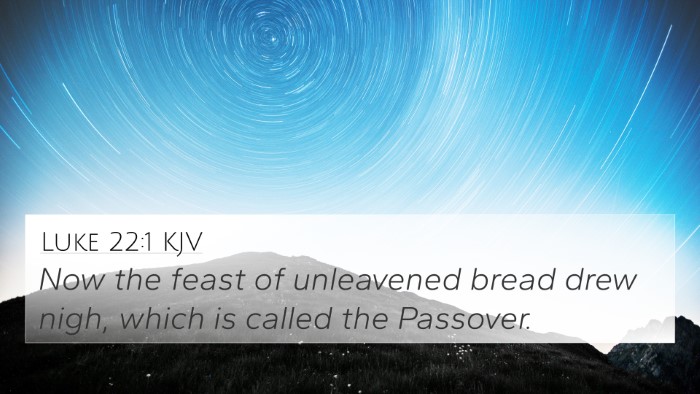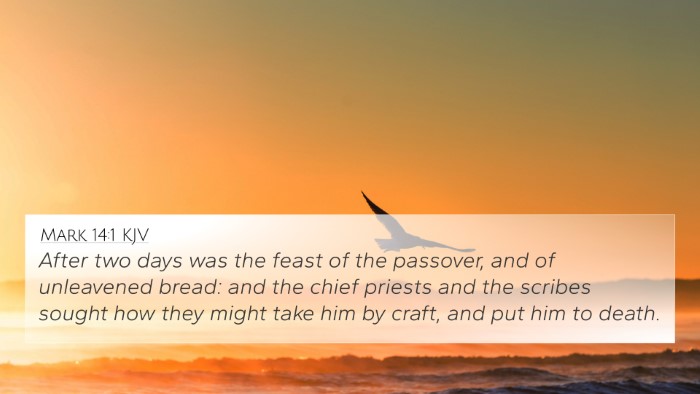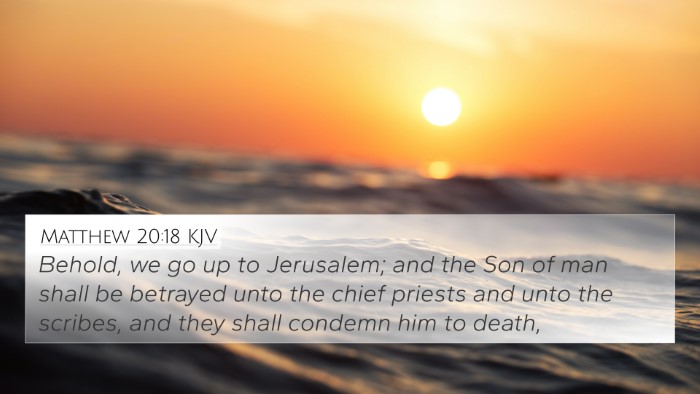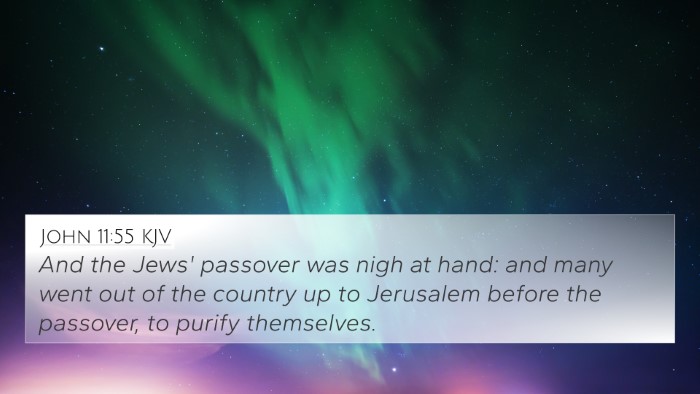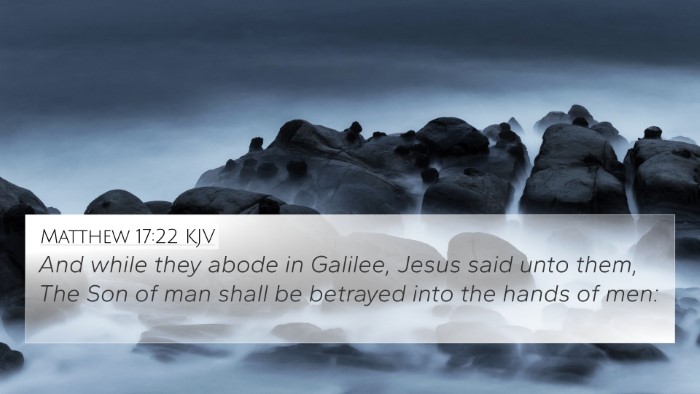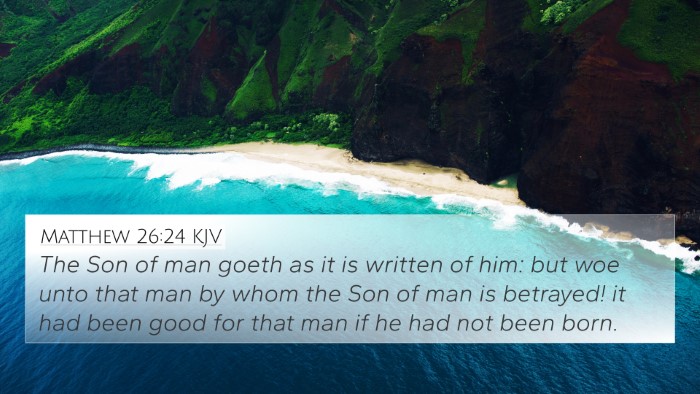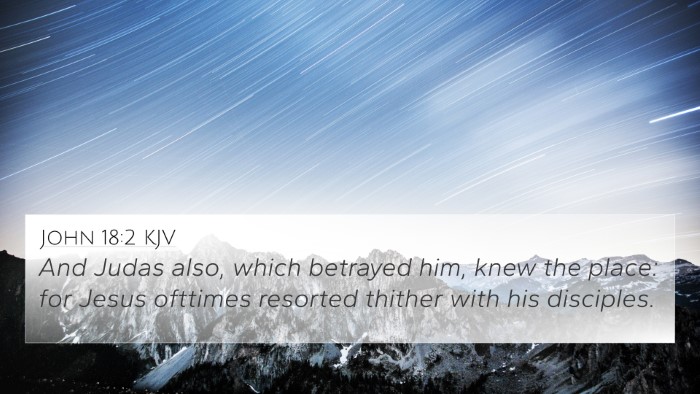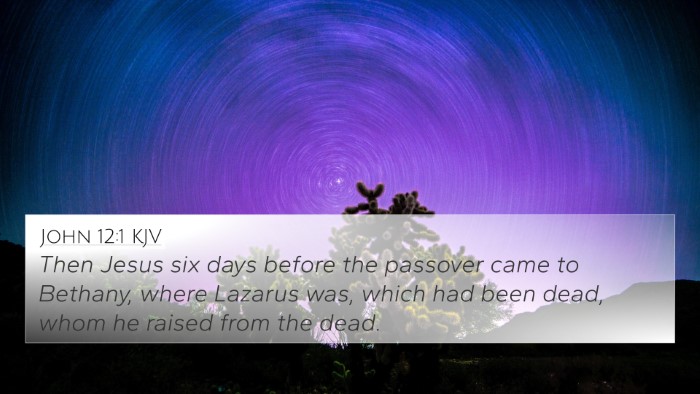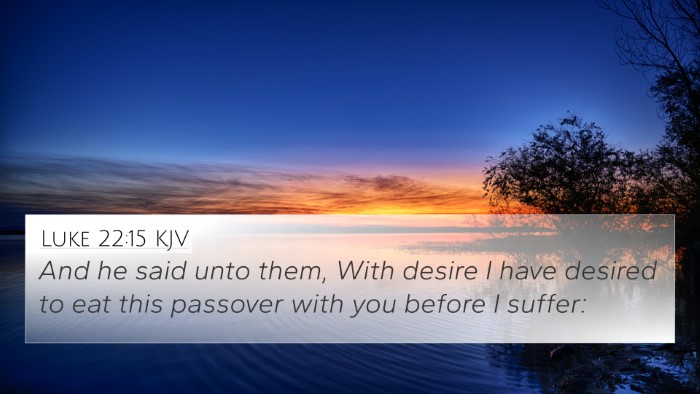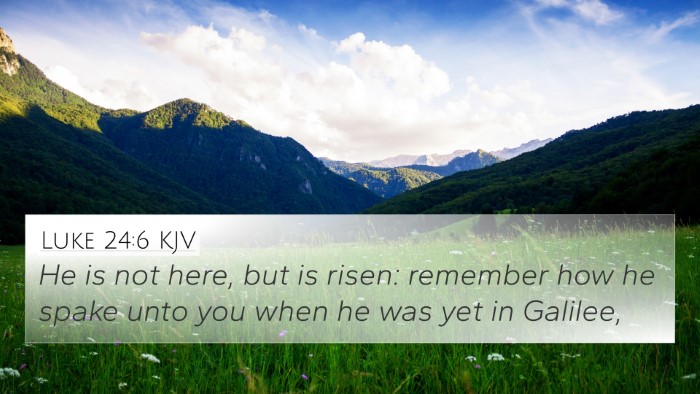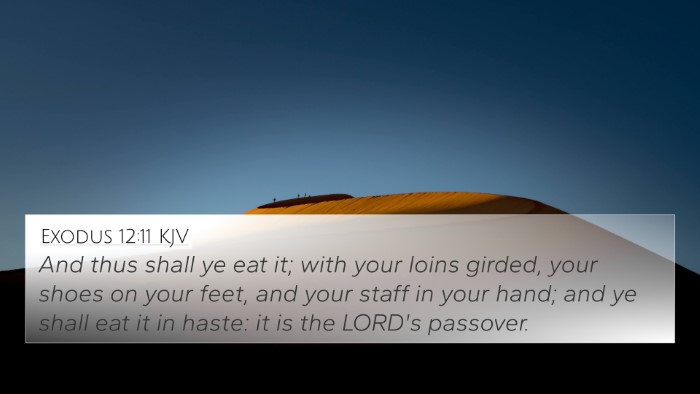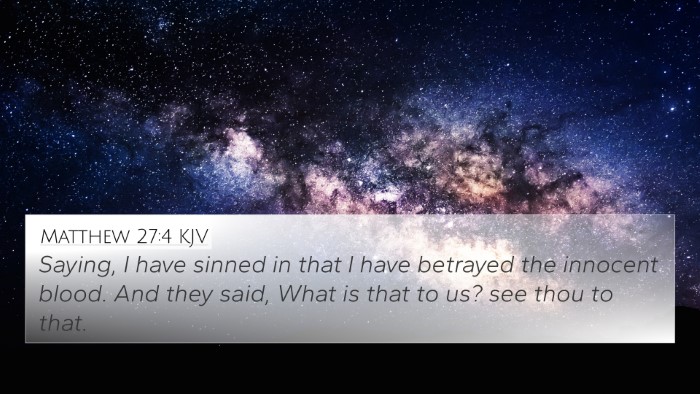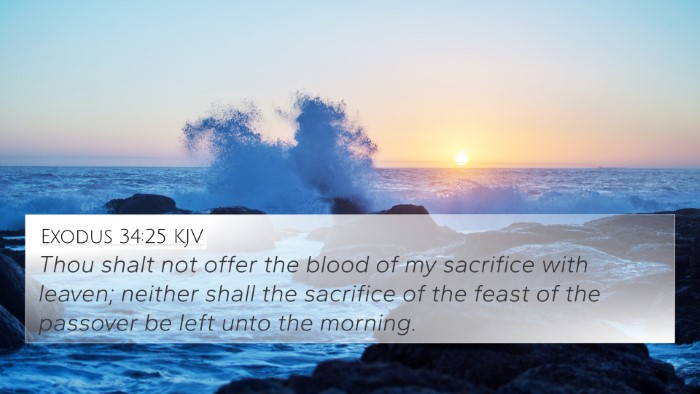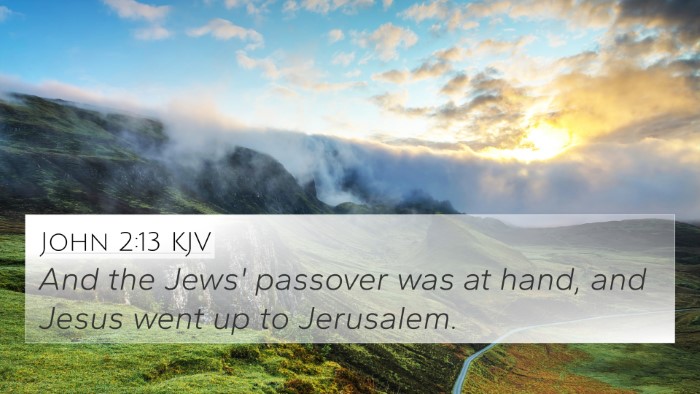Understanding Matthew 26:2
Matthew 26:2 states, "You know that after two days is the feast of the passover, and the Son of man is betrayed to be crucified." This verse marks a significant moment in the journey towards the crucifixion of Jesus Christ, encapsulating profound theological themes and prophetic fulfillments.
Exegesis and Thematic Analysis
This verse provides critical insight into the timeline of significant events leading up to the crucifixion, highlighting the anticipation of both the Passover feast and the betrayal of Jesus. The mention of the Passover underscores the theme of sacrifice, connecting to the Old Testament’s institution of the Passover, where lambs were sacrificed, pointing to Christ as the ultimate Passover Lamb.
Key Themes Identified in Matthew 26:2
- The Sovereignty of God: Jesus communicates His foreknowledge, asserting divine authority over the timeline of events.
- The Nature of Betrayal: This foreshadows the imminent betrayal by Judas Iscariot, emphasizing human failings against divine purpose.
- Sacrificial Significance: The dual mention of the Passover links Christ’s forthcoming sacrifice to the Jewish tradition of animal sacrifice.
- Fulfillment of Prophecy: The prediction of His betrayal fulfills prophetic scriptures regarding the coming Messiah.
Cross-References for Deeper Insight
Understanding Matthew 26:2 enhances with the identification of related scriptures. Cross-referencing provides richer insights. Below are some related verses:
- Exodus 12:13 - Discusses the blood of the Passover lamb safeguarding the Israelites, paralleling Christ’s blood as a source of salvation.
- Isaiah 53:5 - Prophetic reference to the suffering servant, more insight into Jesus’ purpose in His suffering.
- Zechariah 11:12-13 - The prophecy regarding the betrayal for thirty pieces of silver foreshadowing Judas’ actions.
- Luke 22:21-22 - A parallel account detailing the betrayal during the Last Supper, illustrating the prophecy in action.
- Matthew 20:18-19 - Prior proclamation of Jesus’ sufferings and death, providing context to the prophecy mentioned in Matthew 26:2.
- John 1:29 - John's declaration of Jesus as the Lamb of God, reinforcing the sacrificial imagery linked with Passover.
- Mark 14:1 - The synoptic parallel explaining the significance of the timing around Passover.
Commentary Insights
Insights from notable commentators can further enhance our understanding:
- Matthew Henry: Henry emphasizes the deliberate timing of the events portrayed in this verse, reflecting the providence of God. He points out that while time was counting down to the Passover, humanity's betrayal was also reaching its climax.
- Albert Barnes: Barnes highlights the historical significance of the Passover and draws connections between the events of Jesus' life and the Mosaic Law, illustrating how Christ fulfills the law.
- Adam Clarke: Clarke discusses the importance of Passover and how the betrayal and crucifixion of Jesus provide a literal fulfillment of God's redemptive plan, allowing believers to see God’s hand in the sequence of biblical events.
Conclusion: Unified Biblical Narrative
Matthew 26:2 serves as a pivotal moment in the Gospels, where the themes of sacrifice, prophecy, and divine foreknowledge converge. Through cross-referencing, we find a cohesive narrative that illustrates profound connections between the Old and New Testament. This illustrates how each event, person, and sacrifice in Scripture points back to Jesus Christ as the ultimate fulfillment of God's redemptive history.
Additional Study Resources
For those studying these connections further, consider utilizing:
- Bible Concordance: A tool to find specific verses and themes as you explore cross-references.
- Bible Cross-Reference Guide: A resource to help identify thematic ties between various scriptures.
- Comprehensive Bible Cross-Reference Materials: Collections of connected verses that provide insight into overarching themes throughout the Bible.
Final Thoughts
Matthew 26:2 not only leads us into the final chapters of Christ's earthly ministry but also acts as a bridge connecting various themes and verses across the Scripture. As we delve into comparative Bible verse analysis, we begin to understand the intricate tapestry of prophetic threads woven throughout the biblical text, revealing the unity and diversity within God's Word.
